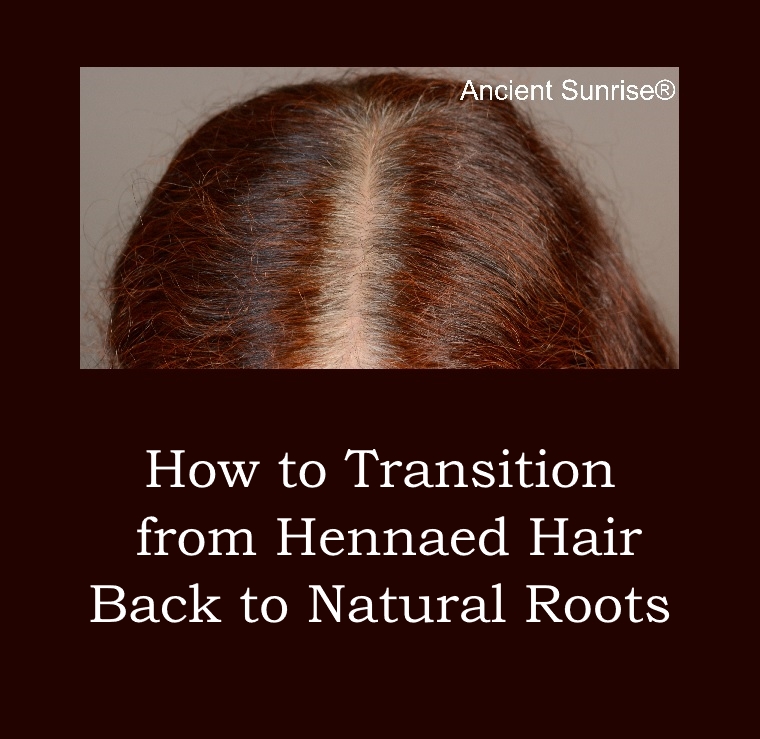
While we’d love for you to stay with us forever, there are many reasons a person may choose to stop using henna, or to return to their natural hair color. You may simply miss your natural color, or expect to have less time or money for hair coloring in your future. Some women have decided to let their natural gray hair grow out. Silver locks are in fashion as of late. Because henna is permanent, it is common to see a noticeable line of demarcation as the hair grows, especially if your treated hair is different from your natural hair color. A frequently asked question regarding transitioning is how to do so without getting a stark contrast between colored hair and roots as your hair grows out.
There are a few different ways to achieve a gradual shift. Because Ancient Sunrise® Henna for Hair products only add to the existing hair color, it is most likely that you will be going from a darker color to a lighter one. The exception to this rule is those who lighten their hair before applying henna. This article will cover techniques for both dark-to-light and light-to-dark transitions.
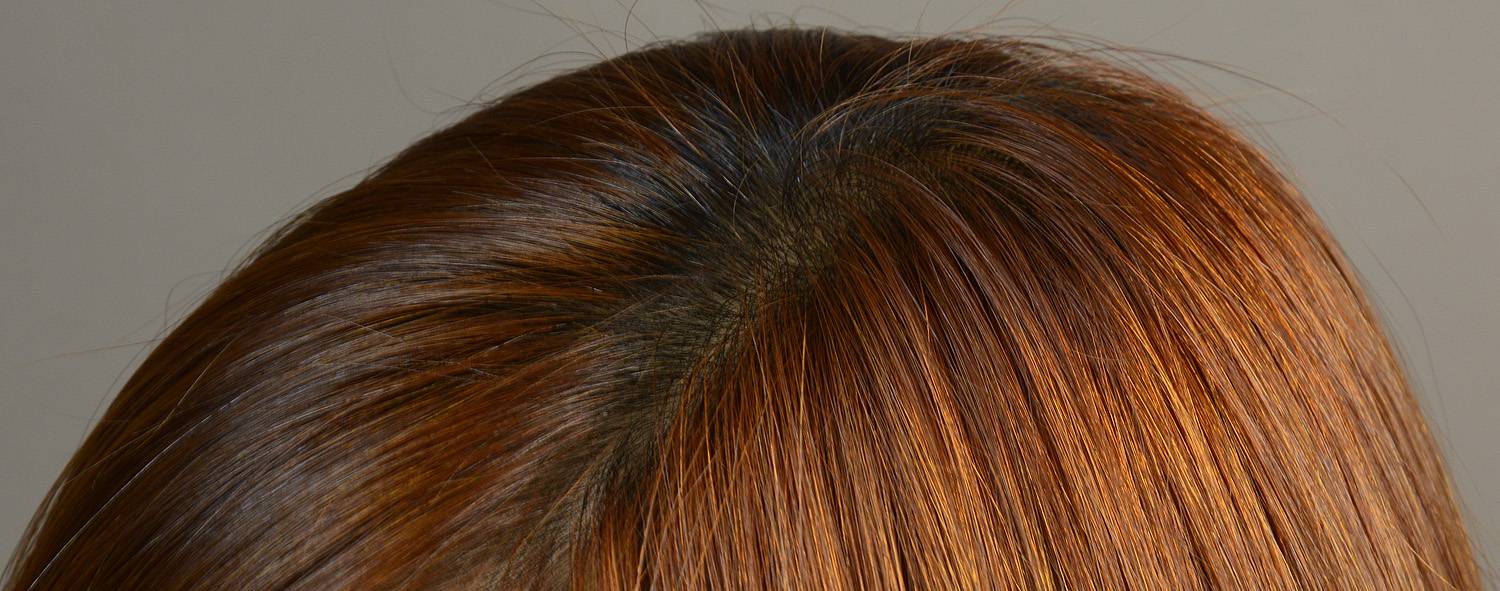
This hair has been lightened and then hennaed. The roots are black.
Transitioning to Lighter or Gray Roots
Henna as Lowlights
Rather than applying your mix to all of your roots, applying only in thin sections while leaving the remainder of your roots natural will create a highlight/lowlight effect with your natural color. You can ask a stylist to apply your mixture in foils, or you can do it yourself at home with a highlighting cap.
A highlighting cap has holes through which to pull thin sections of hair while keeping the rest of the hair protected underneath. Pull through your desired sections, apply henna to those sections, and process as normal. As your hair grows, gradually decrease your number of lowlights.
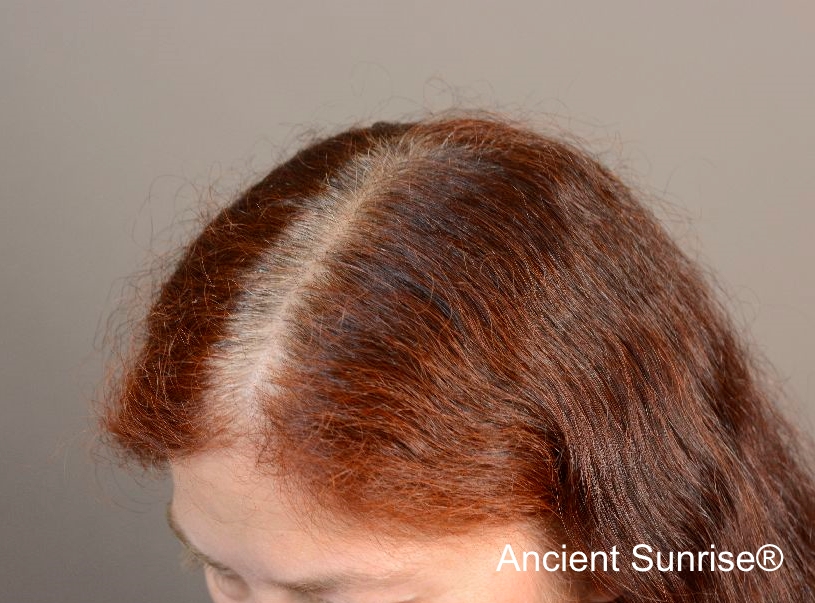
This person’s roots are mostly gray. Adding applying henna as lowlights would break up the root line.
Adding Cassia
Another option when transitioning is to adjust the mix itself so it becomes lighter. Cassia works to dilute and lighten the resulting shade of a henna or henna/indigo mixture.
For example, if your regular mix is equal parts henna and indigo for a medium brunette result, you can create a mix of equal parts henna, indigo, and cassia for a lighter brunette. The next time, increase your amount of cassia again. Keep your original mix ratio the same, only increasing the amount of cassia you add to your mix.
Below is an example of how a person might adjust with cassia over time. Keep in mind that everyone’s mix and hair color varies; this is only one example. Don’t hesitate to contact customer service for help with a custom transition plan. Be sure to ask about measurements to avoid mixing too much, too little, or in the wrong ratios.
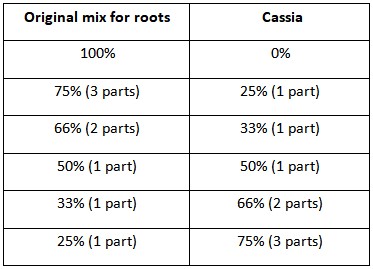
Cassia should be dye-released with henna. Mix henna and cassia together and stir with an acidic liquid to create a paste, just as you would with henna. Cover your mixture and let it sit as normal. Mix and add your indigo paste just before applying.
Feel free to experiment with test strands. When in doubt, always start lighter. If your root results are too light, you can always adjust afterward. For more helpful information about cassia mixes, be sure to read How to Dye Hair Blonde.
In some cases, mixing with cassia leads to brighter or more golden-toned results. If you prefer a neutral shade my article on Cool and Neutral Mixes will help you keep your desired tone as you transition.
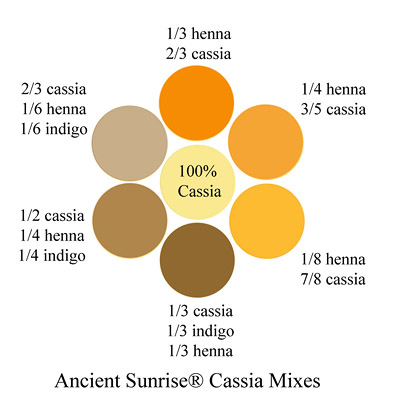
Lightening
As long as you have only used Ancient Sunrise® Henna for Hair products, it is safe to use a chemical hair lightener. Ancient Sunrise® plant dye powders have been tested for purity, and do not contain any metallic salts or additives that may be unsafe to lighten.
You may choose to lighten the full length of the hair, or to have highlights put in as your roots grow, to blend away the line of demarcation. Be sure to conduct a strand test first to determine the resulting color and whether your hair can withstand lightening.
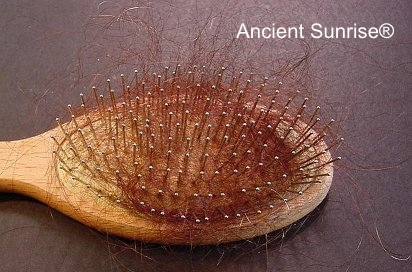
If you have been using a mix containing indigo, it is particularly important to conduct a strand test first. Indigo does not always lift completely from the hair. Hair that has been dyed with mixes of 50% indigo or more may see a blue or green cast remaining after lightening. The degree to which this happens varies from head to head, and also depends on how many shades you plan to lighten. Sometimes this is subtle and can be toned away. If you have been doing a two-step process for jet black hair and wish to lighten to platinum blonde, more likely than not you’ll find it won’t be possible.
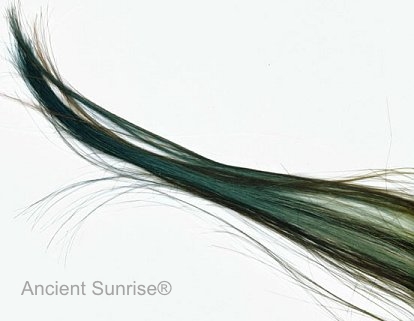
For more information about lightening over henna, read the Ancient Sunrise® Henna for Hair free e-book chapter on lightening.
Transitioning to Darker Roots
If you have chemically lightened your hair before applying henna, your root color may be darker than the length of your hair. The most straight-forward solution is to dye all of your hair with a mixture that will match your roots. This will result in a uniform color that blends seamlessly with your natural color.
However, there may be reasons to perform a gradual transition. Perhaps you desire an ombré effect, or wish to be able to lighten your hair in the future. For example, I currently have fiery red hennaed hair, and my natural hair color is virtually black. I like to play around with colors quite a bit, including fun, demi-permanent colors. If I were to use a two-step process to dye all of my hair back to black, I would have less flexibility if I chose to lighten in the future. I might not be able to achieve bright or pastel tones.
Henna as Highlights
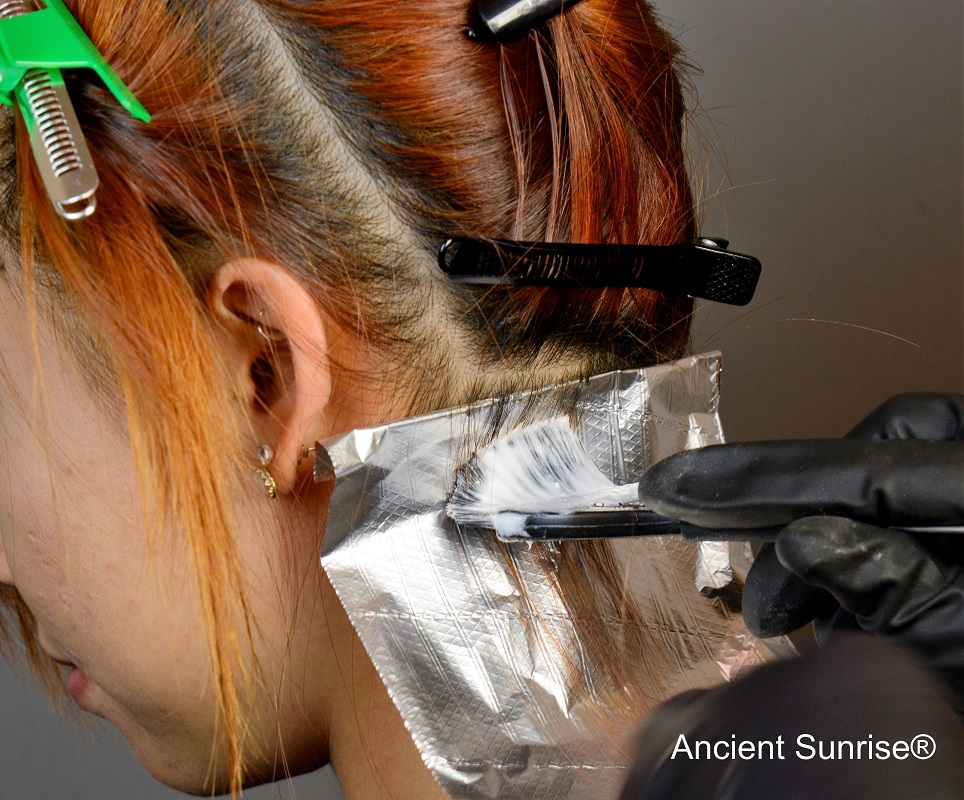
This technique is similar to the one described above, only backward. Instead of applying a henna mixture to create lowlights, have a stylist create highlights in your hennaed hair to break up the root line. As your hair grows, decrease the amount of highlights. If you wish, you may continue applying henna between highlighting. This will create a range of “fire-lights,” giving your hair beautiful dimension. The Ancient Sunrise® Henna for Hair chapter on lightening covers this process in detail.
As mentioned above, be sure to conduct a strand test, especially if you have been using a mix containing indigo.
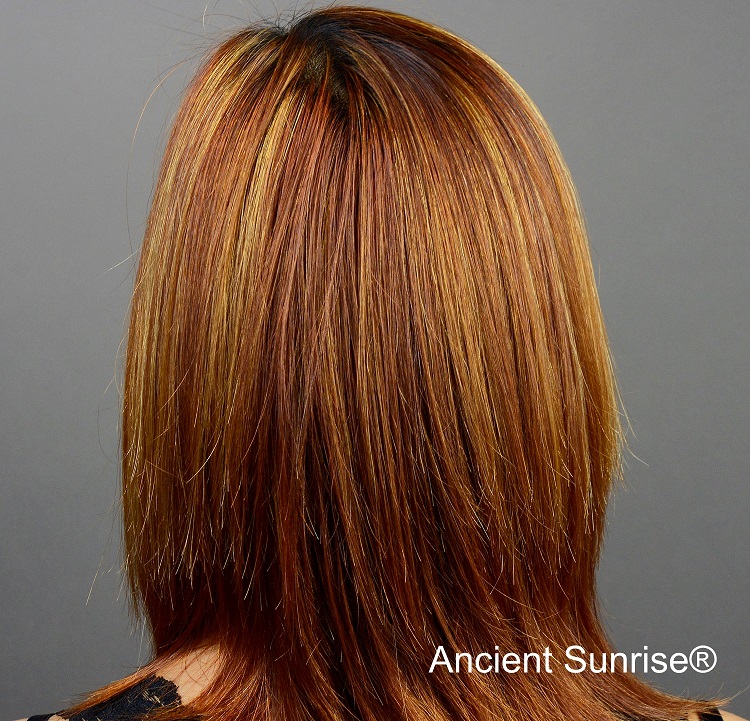
Condition and Strengthen Without Color
Even if you choose not to color your hair anymore, you can still use products from Ancient Sunrise® to keep your hair beautiful, shiny, and strong.
Cassia
Cassia has similar conditioning properties as henna, with little to no color change on darker hair. To use cassia as a conditioner, simply mix it with distilled water only (no juice or fruit acid) and apply immediately. When it has not released its dye, cassia will condition the hair without affecting color. If your hair is naturally dark brunette or black, you can dye-release cassia for extra conditioning benefits without seeing a change in your hair color. To learn more about using Ancient Sunrise® Cassia for conditioning, click here.
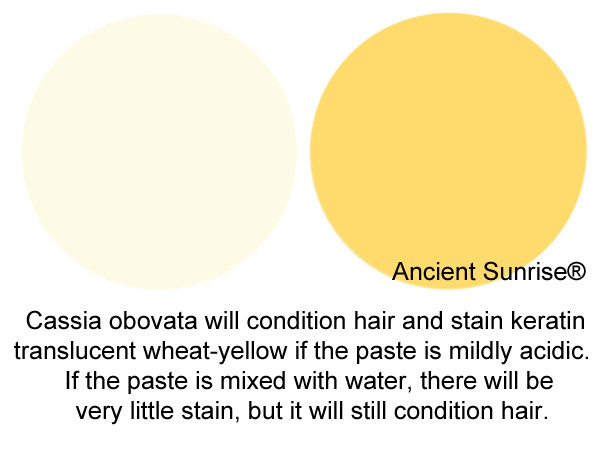
Zizyphus
For those with very light hair, even cassia that has not been dye-released may impart a subtle golden tone. Zizyphus spina christi is another great option for keeping hair strong and healthy without changing its color. Zizyphus is a natural 2-in-1 shampoo/conditioner that both washes and fortifies the hair. Because it leaves a thin layer of plant wax on the hair, it is particularly good for hair that is subject to water, wind, and other harsh environmental factors. Zizyphus balances the hair’s moisture and gives it great shine. Read more about Zizyphus here and purchase here.
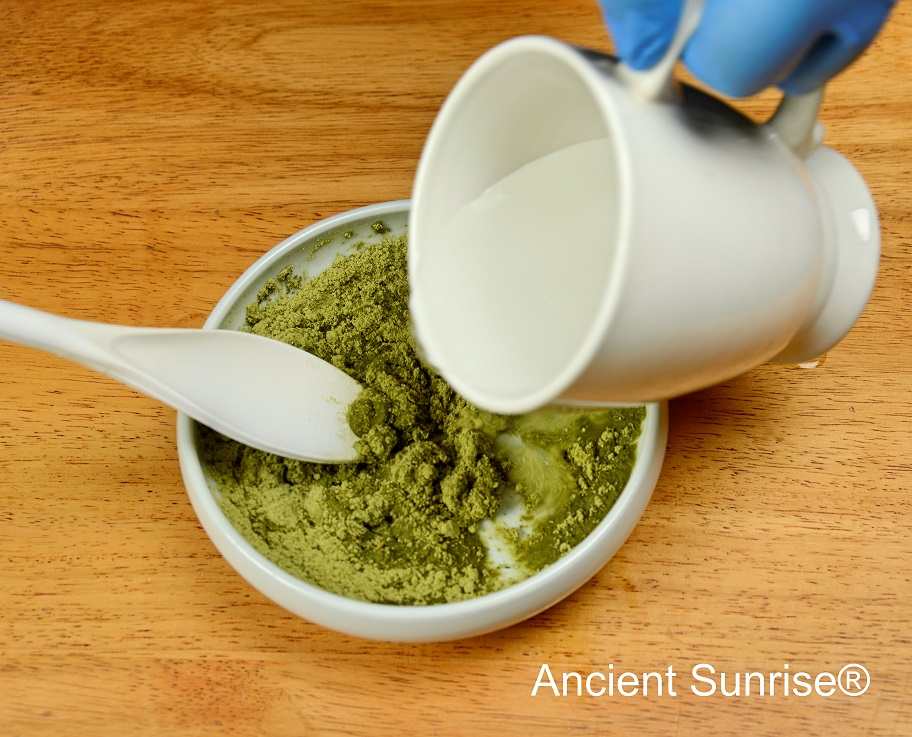
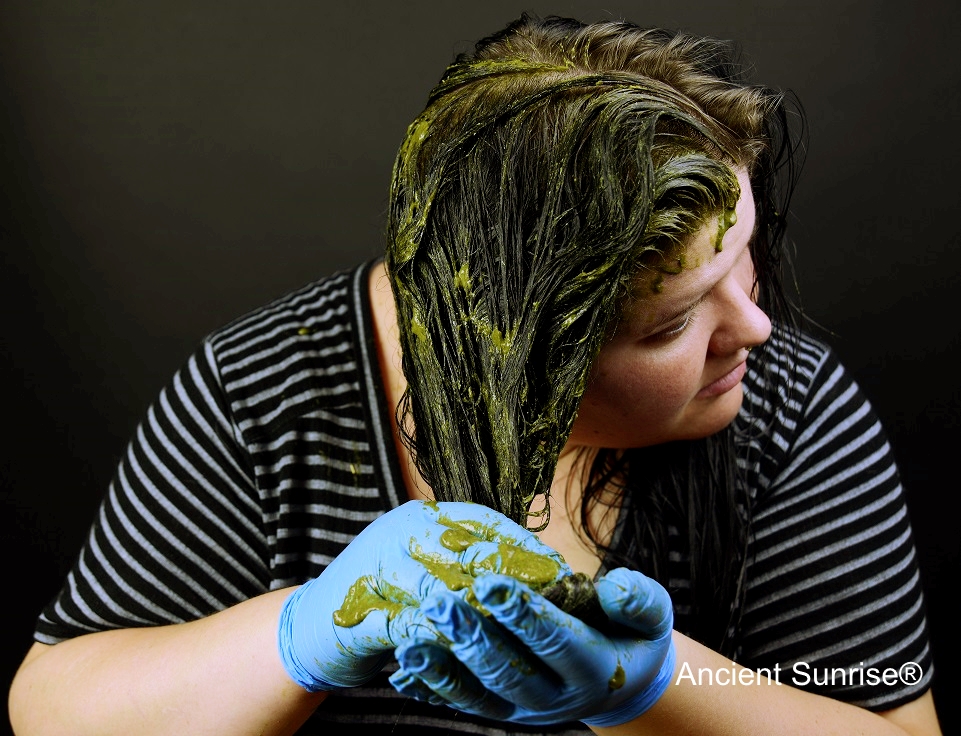
As always, if you ever need advice or help, don’t hesitate to contact Ancient Sunrise® Customer Service.
